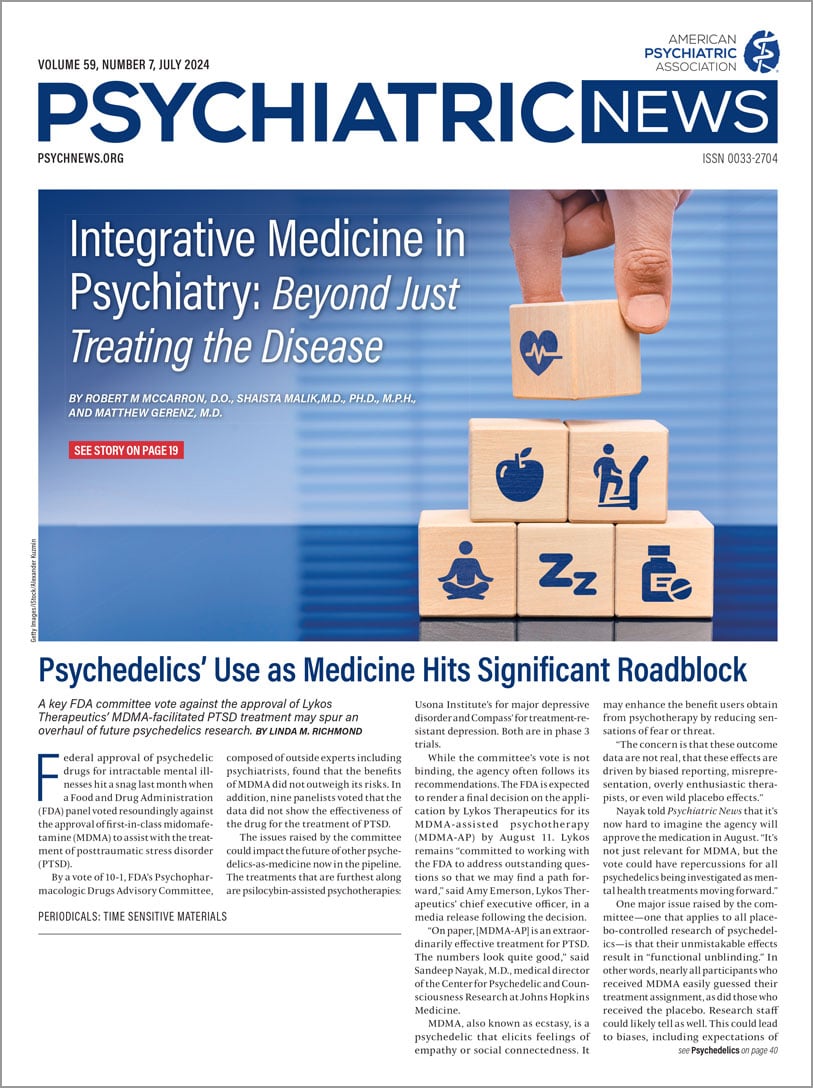Since he entered the field of psychiatry, Jess Shatkin, M.D., M.P.H., has learned that psychiatry typically focuses on what’s wrong with patients.
“There isn’t a lot of focus on what’s right and what’s going to help them to manage the inevitable bumps in the road ahead,” said Shatkin, the Child and Adolescent Psychiatry Fellowship program director at the Child Study Center at NYU Langone Medical Center and a professor of child and adolescent psychiatry and pediatrics at the New York University Grossman School of Medicine.
Shatkin has become increasingly interested in psychiatry’s role in preventing mental illnesses as well as preventing them from worsening among vulnerable patients. It’s a topic that is also gaining more traction within the wider field.
A recent
webinar hosted by the Brain & Behavior Research Foundation focused on research and interventions aimed at preventing mental illnesses in youth. Autumn Kujawa, Ph.D., spoke about the research her lab has conducted that explores ways to prevent or reduce depression risk by enhancing positive emotions, such as happiness, joy, excitement, or contentment, in children and young adults. Kujawa is an associate professor of psychology and human development and director of the Mood, Emotion, and Development Lab at Vanderbilt University.
Kujawa explained that many treatments and preventive interventions for depression tend to focus on negative emotions. Cognitive-behavioral therapy (CBT), for example, focuses on noticing the connections between thoughts and behaviors that contribute to negative mood cycles. While these interventions can be extremely beneficial and effective, she said, “[w]e think the neuroscience research may be telling us that in some cases, and for some people, traditional CBT may not be focused enough on rewards and building up positive emotions.”
In the Mood, Emotion, and Development Lab, Kujawa and her colleagues try to understand how core emotional and social processes emerge across development and can be altered in patients with depression. One of the areas they’ve focused on is reward responsiveness, as low responses to rewards (in that the world feels less rewarding or that patients are less likely to seek out positive experiences) is one of the characteristics of depression for some patients.
The researchers conduct EEG tests while patients complete computer tasks to elicit reward responses. Through the EEG signals, they can detect what they’ve referred to as the reward positivity component, which is a reward response that occurs in the brain within a fraction of a second and correlates with behavioral and self-reported tendencies to experience positive emotions, Kujawa explained. “We think this is a really reliable, valid measure of reward processing in the brain that can be used across development,” she said.
In a
study published in the
Journal of Abnormal Psychology, Kujawa and her colleagues analyzed the reward responses of 407 9-year-old children of mothers with histories of depression and/or anxiety. They found that children whose mothers had a history of clinical depression, but not anxiety, showed blunted reward responsiveness compared with other children. They also found that the reward responsiveness in children was associated with the severity of the mother’s depression.
When Kujawa and her colleagues then followed up with the study participants three years later, they found that low reward responsiveness prospectively predicted increases in depression over time. The
findings were published in 2019 in the
Journal of Child Psychology & Psychiatry. “This pattern suggests that low reward responsiveness may be observable in children at risk for depression before they develop depression themselves,” she said.
Kujawa and her colleagues have been developing a new preventive intervention for depression that harnesses positive emotions called Family Promoting Positive Emotions. The eight-session intervention is delivered by a skills coach to mothers who have reported elevated depressive symptoms and their children. During the sessions, the mothers and children identify shared goals for pleasant activities, learn about cognitive skills that increase attention to positive aspects of their lives, and learn about cultivating a shared gratitude practice.
In the pilot study testing the Family Promoting Positive Emotions intervention, 55 mother-child pairs were assigned to receive the intervention or to receive psychoeducation materials weekly via email. To determine the positive affect before and after the study, children in both groups completed the Positive and Negative Affect Schedule. Children who received the positive emotions intervention along with their mothers showed an increase in positive affect after the eight sessions, while those who received written information via email showed no such improvement. The
findings were published last September in
Behaviour Research and Therapy.
Kujawa said that she and her colleagues have received a grant to conduct a larger study of the intervention. She noted that mothers reported improvements in their own symptoms after participating in the intervention. “That could suggest that this intervention might have benefits for both children and parents,” she said.
Shatkin, who was not involved in the webinar or Kujawa’s research, said there are many ways psychiatrists can be proactive about prevention. Child and adolescent psychiatrists can do a lot of good by focusing on parenting strategies within the family even while they’re working with children, he pointed out. A significant body of research shows that parenting has significant impacts on a child’s long-term success and vitality.
Psychiatrists can also get involved in their communities, perhaps by providing consultations to parents and schools, he said. They can even engage more in prevention within their own practices. He prescribes exercise, writing down his recommendation for his patients’ exercise routines on a prescription pad.
“We can talk about developing a sleep log or dietary plan with our patients, connect them with dieticians, or connect them with workout plans that are realistic for them,” he said. “These things are really effective and can have a meaningful impact for a lot of our patients.” ■

